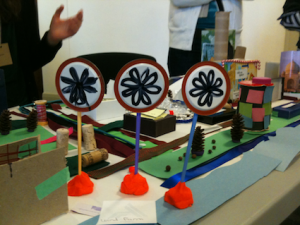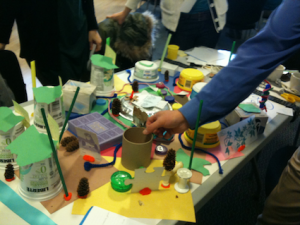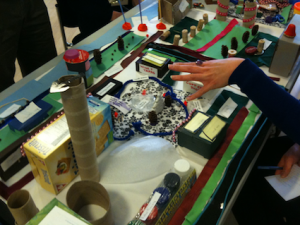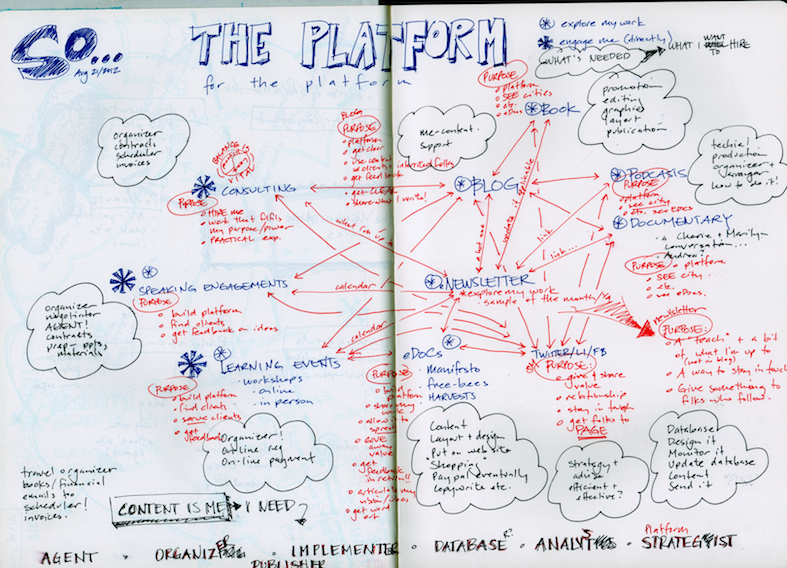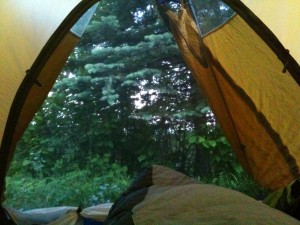My friend Ann Linnea, during the months after her 43rd birthday, paddled around Lake Superior. She calls this her Deep Water Passage, a spiritual journey at midlife. I have just turned 43 and I feel that I am at the beginning of a trek of some sort myself, though I am not entirely sure what it is.
Or do I just tell myself that I don’t know?
Ann’s words, as she starts to tell her story, ring out:
When we deliberately leave the safety of the shore of our lives, we surrender to the mystery beyond our intent.With a poet’s eye, I look at these words again:
When we deliberately leave the safety of the shore of our lives, we surrender to the mystery beyond our intent.And again:
When we deliberately leave the safety of the shore of our lives, we surrender to the mystery beyond our intent.Her journey has a clear destination: to circumnavigate the world’s largest lake by kayak. She knows this is a learning journey; she was prepared for it to change everything in her life. With her paddling partner, she declared intent and commitment to embark on a journey for which she had no idea what would emerge. She surrendered to the mystery beyond the immediate destination. The destination was beyond paddling around the lake; Ann herself would change.
My question to myself – what am I circumnavigating?
I have embarked on a journey to write a book about our evolutionary relationship with cities, a journey to figure out what I see and to share it with others. Inside this journey is a desire within me to be in relationship with others about work. That is why I have chosen to share it on my blog while I write. You get to see parts of it here before it miraculously appears on bookshelves all spiffed up. I started sharing it long ago.
My paddling trek, if you will, is to enter into a more explicit relationship with readers. I wish to reach out to folks interested in this work in a more active manner. And this makes me feel uneasy and uncomfortable because it feels, at first glance to me, as my ego pushing myself out into the world for ego reasons. Upon deeper examination of my motivations, however, I see that it is really about being in a more explicit relationship with my readers. When we choose to hang out with each other, what we will do together will emerge. I desire to know what you find valuable in what I offer. I desire to know what I can do to offer more value. I need to reach out to do this.
My ‘safe shore’ is here, where I quietly do my thing and passively share it with you. I rely on you to find me. Over the course of 2013 I will be leaving the safety of this shore and reaching out explicitly to you. I will actively seek connections with you (and many others) through this blog, newsletters and social media. Ann’s destination was to circumnavigate the planet’s largest freshwater lake; my destination is to be in relationship with 40,000 ‘followers’.
I am way beyond my comfort zone to say that I want to have 40,000 followers, let alone write it here. It churns up negative feelings of hubris in me. I choose, however, for this destination to mean this: I trust that when I reach out, those that want to be in relationship with me will subscribe to do so. We have work to do together and we need to find each other. I am taking the initiative to describe this work and put it out into the world. I want to be in relationship with others of similar ‘vibrational frequency.’
This will require me to step way out beyond my comfort zone and zealously promote my work in the coming months. As I do so, the commitment I make is to continually reach inside me as I reach out to you, and share what I find.
As I reach out to you, I have to reach further in to me.
_____ _____ _____
Further reading
Ann Linnea, Deep Water Passage: A Spiritual Journey at Midlife
Click here for an overview of the three parts of Nest City: The Human Drive to Thrive in Cities. Click here for an overview of Chapters 4-7 (Part 2 – Organizing for Emergence).
_____ _____ _____
